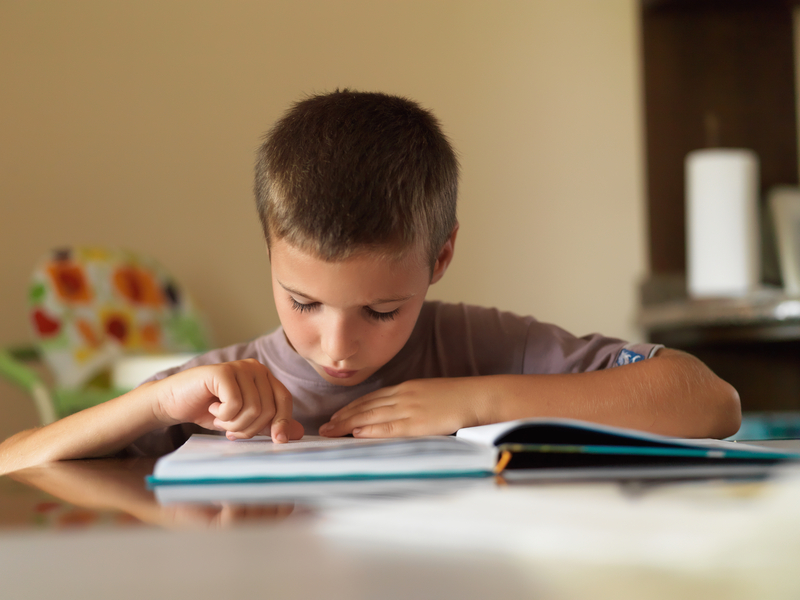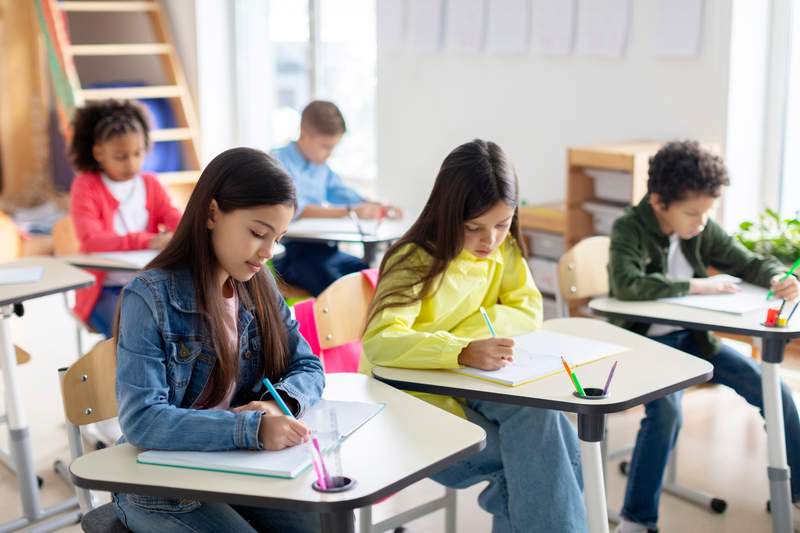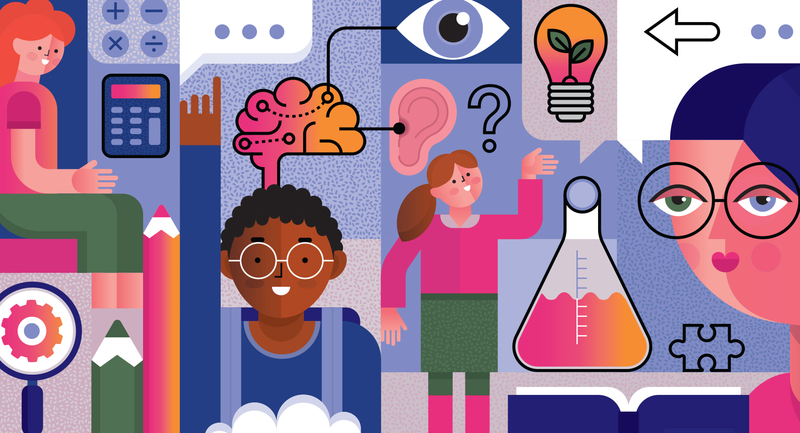These are trying times for all of us. Pervasive school closures due to the COVID-19 pandemic have left many teachers and administrators feeling fearful, anxious, and acutely missing their students and staff. As a professional development facilitator, I severely miss face-to-face time with my students: teachers and instructional coaches. Not to mention that it is very hard to juggle homeschooling my own children and designing professional learning for those I serve.
The strain of tending to intensified personal needs and serving our school communities makes differentiating instruction likely the last thing on anyone's mind. However, it may be the single most important instructional move right now.
You're likely working as hard as you can to teach in this unfamiliar, virtual environment and feel that you "can't possibly add one more thing." For many educators, differentiation can seem like "one more thing," when actually it just means focusing on our students' needs.
Learning and Belonging
High-quality differentiation focuses on learning rather than doing. COVID-19 forced educators to quickly assemble distance learning opportunities for students. Initially, the default was to give students something to do. For example, a week after schools closed, The Today Show shared a list of tools educators and parents can use under the umbrella of "websites to occupy kids". But in order to ensure the social-emotional and academic growth of our students, we must do much more than keep them busy. Now, more than ever, learning must be anchored in a sense of belonging.
A sense of belonging is a "fundamental human motive," says clinical psychologist Paul Rasmussen in The Quest to Feel Good (2010, p. 43). On a typical school day, students learn alongside peers, work with partners, and collaborate in small groups as they progress toward mastery of learning goals in multiple content areas. However, in a pandemic-altered learning landscape, academic objectives can feel cold and sterile, and inadvertently cause disconnection. At this time, every student at every level has a similar learning objective to belong to this learning community. How will we know if students feel connected or not? In short, we ask them.
Assess for Connection
My colleague and mentor Carol Ann Tomlinson calls formative assessment "the lifeblood of differentiation." Formative assessment is frequently thought of as a quiz or test. However, anything that gives teachers insight into where their students are emotionally and academically and enables teachers to plan instruction is formative assessment. Our go-to measure during remote learning is the question, "How do you feel?"
This simple question will elicit lots of one-word responses from students—good, bad, bored, fine—which give teachers an opportunity to probe further: Tell me why you feel good. What is different about learning from home that you like? What is something about school that you miss? The key here is not to try to fix anything but to ask follow-up questions that empathize with students and ensure they feel heard. This process promotes dialogue between students and teachers, forges connection, and gives teachers guidance on how to plan academic instruction.
Tip: Give students the option of responding with emojis, hand signals, or drawings instead of words. This is an especially good option for younger students and students who have difficulty expressing their emotions.
An Academic Map
After gaining insight into how our students are feeling, we can determine which academic objectives (derived from grade-level standards), activities, and groupings are most appropriate for students. For example, if two students share that they are "lonely" or "bored," you may plan ways for those students to have additional interactive time—pairing them to work on a text together or to collaborate on an activity.
Insights students provide during community-building activities will help teachers set learning goals that are compelling to students (e.g., "My goal is to is to bake banana bread. I need to double the ingredients to feed my whole family. Therefore, I will learn how to add or multiply fractions.")
Additionally, not every student will have access to a parent or caregiver to support at-home learning, and parents are not teachers. Parents have massively different capacities to facilitate remote learning due to their own education level, native language, number of children at home, whether or not they are also trying to work remotely, and level of stress due to the other effects of COVID-19 (economic, caretaking of elderly family members, etc.).
Finally, we do not know how long schools will be closed. We must plan remote learning for students that is sustainable and engaging or we will lose our students and their parents.
With this in mind, there are some ways educators can use differentiation to guide learning opportunities that are equitable and accessible for students and their caregivers.
DIFFERENTIATION FOR REMOTE LEARNING
Why We Need Differentiation Now More Than Ever - table
Differentiation Pillar | Dos and Don'ts | Strategies |
|---|
| Learning Environment: The culture and climate of student/teacher interactions | Do: Provide interpersonal communication opportunities. Do: Personally connect with each student twice a week or more. Don't: Worry about making things "equal." The length or frequency of interactions matters less than the quality. | Remote conferring: Connect with the whole class, small groups, or individual students via phone, app, or online platform. Letter writing: Students also practice addressing an envelope properly. |
| Content: What students learn | Do: Promote student engagement by ensuring students understand concepts' and skills' relevance. Do: Focus on exposing students to concepts and skills and practicing them in ways that allow for your feedback. Don't: Worry about students having a deep understanding of all content. | Choice: Students choose from texts, concepts, ideas, or skills within a content area. Targeted questioning: The teacher chooses the content or text but differentiates the focus for students (e.g., some find text evidence to identify the setting while others find text evidence to determine the theme). Flexible pacing: Allow students to spend longer or shorter time with content depending on their interest. |
| Process: How students acquire learning | Do: Ensure access to reliable resources to practice skills and concepts. Do: Focus on skills that apply to all content areas (i.e. cause and effect, claim and evidence). Don't: Give students long packets of work. We run the risk of having students practice skills incorrectly or quickly becoming disengaged. | Video conferring Live-streamed lessons Video recordings of lessons: These can be teacher-created or -curated. Shared/interactive documents Simulations/experiments: For example, instead of completing a worksheet, students could find the area and perimeter of something in their own homes. Short, targeted practice Skill-based graphic organizers |
| Product: How students demonstrate learning | Do: Encourage students to share authentic examples of learning. Do: Ask students questions about their learning and provide opportunities for them to share with classmates. Don't: Worry about grading. Students must be successful if we want them to continue learning from home. | Student choice and interest Virtual collaboration: Students work with one another. Feedback: Differentiate delivery and depth. Task-related feedback helps students understand the concept or skill (right/wrong, yes/no, stop/go). Process-related feedback identifies progress and errors, relationships between ideas, and next steps. ("What strategies did you use?" "What is/isn't working and why?") Self-evaluation supports students who can self-direct learning by providing prompts that deepen reflection. ("How does this compare to … ?" "How have your ideas changed?"). |
Some of the tools and resources that can support you as you differentiate to meet students' needs remotely include
Video-conferring or live-stream apps like Zoom, Google Meet, and FaceTime.
Sharing platforms such as Otus, Google Classroom, SeeSaw, and Flipgrid.
Digital resources familiar to students (e.g., Kahn Academy, NewsELA) and anything accessible to students (books, articles, newsfeeds, their backyards, TV shows, their imagination, family members, etc.). Remember, too many choices result in indecision. Three or four digital resources is more than enough.
Aim for Growth, Not Perfection
People always ask me, "Am I doing differentiation right?" My response is always the same: There is only one way you can mess differentiation up, and that is knowing that your students need something but not trying anything to meet their needs.
We don't always succeed in our attempts to meet students' needs. In a remote learning environment, there are likely to be even more failed attempts. The goal is not perfection. The goal is to reflect on what is working and what isn't (for teachers and students), adjust, and keep going. As we do so, have compassion for your students and yourself. Everyone is doing the best that they can.








